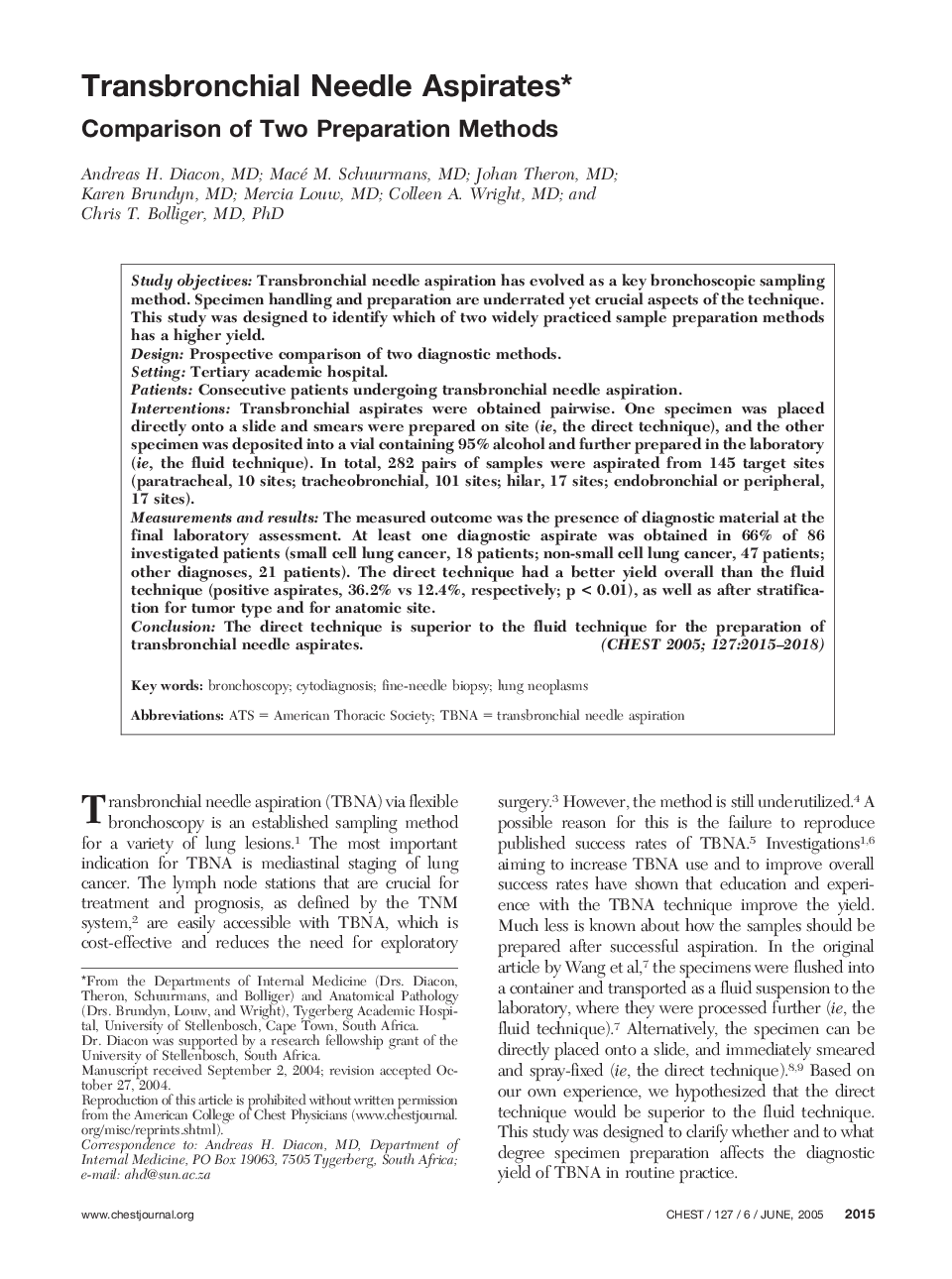| Article ID | Journal | Published Year | Pages | File Type |
|---|---|---|---|---|
| 2904785 | Chest | 2015 | 4 Pages |
Study objectivesTransbronchial needle aspiration has evolved as a key bronchoscopic sampling method. Specimen handling and preparation are underrated yet crucial aspects of the technique. This study was designed to identify which of two widely practiced sample preparation methods has a higher yield.DesignProspective comparison of two diagnostic methods.SettingTertiary academic hospital.PatientsConsecutive patients undergoing transbronchial needle aspiration.InterventionsTransbronchial aspirates were obtained pairwise. One specimen was placed directly onto a slide and smears were prepared on site (ie, the direct technique), and the other specimen was deposited into a vial containing 95% alcohol and further prepared in the laboratory (ie, the fluid technique). In total, 282 pairs of samples were aspirated from 145 target sites (paratracheal, 10 sites; tracheobronchial, 101 sites; hilar, 17 sites; endobronchial or peripheral, 17 sites).Measurements and resultsThe measured outcome was the presence of diagnostic material at the final laboratory assessment. At least one diagnostic aspirate was obtained in 66% of 86 investigated patients (small cell lung cancer, 18 patients; non-small cell lung cancer, 47 patients; other diagnoses, 21 patients). The direct technique had a better yield overall than the fluid technique (positive aspirates, 36.2% vs 12.4%, respectively; p < 0.01), as well as after stratification for tumor type and for anatomic site.ConclusionThe direct technique is superior to the fluid technique for the preparation of transbronchial needle aspirates.
